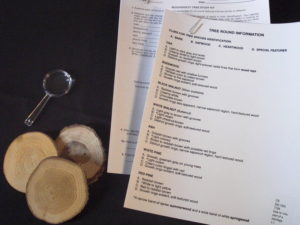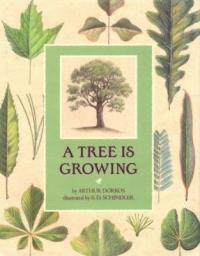April showers bring May flowers, and we have a downpour of new books at the OISE Library! April’s new titles include both lighthearted children’s books and books that deal with difficult subjects.
Adam Rex and Christian Robinson’s delightfully charming new book, School’s First Day of School is the first of this month’s new titles. This picture book, which w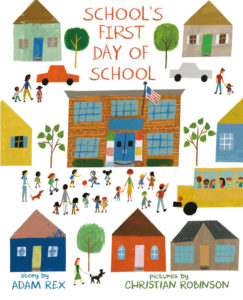 ould be well suited to an elementary-level reading level, tells the story of a newly built school. The school (named “Frederick Douglass Elementary”) is the main character, and experiences the first day of school for the first time. Through this narrative, Rex and Robinson explore everything from making friends to shapes and manners. The different episodes within the book are held together by the thread of the friendship between the school and the janitor. Christian Robinson’s illustrations are bright and endearing, and have enough details to hold the attention of both readers and non-readers. This would be a good resource for teachers dealing with shy students or students who are struggling to make friends.
ould be well suited to an elementary-level reading level, tells the story of a newly built school. The school (named “Frederick Douglass Elementary”) is the main character, and experiences the first day of school for the first time. Through this narrative, Rex and Robinson explore everything from making friends to shapes and manners. The different episodes within the book are held together by the thread of the friendship between the school and the janitor. Christian Robinson’s illustrations are bright and endearing, and have enough details to hold the attention of both readers and non-readers. This would be a good resource for teachers dealing with shy students or students who are struggling to make friends.
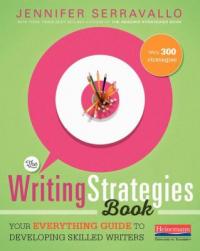 Jennifer Serravallo provides practical advice for teachers of writing in her book The Writing Strategies Book: Your Everything Guide to Developing Skilled Writers. This how-to guide is an impressive new resource; it has both sleek graphics and simple instructions. There are over 300 strategies in this book, which are part of the ten chapters (called “goals”) of Serravallo’s approach. Topics include “Engagement: independence, increasing volume, and developing a writing identity,” “conventions: spelling and letter formation,” “conventions: grammar and punctuation,” and “collaborating with writing partners and clubs.” The author includes a helpful introduction to guide the reader through the implementation of the approaches discussed in the book. There is a helpful appendix included at the end, and an extensive list of references to help guide the reader to further materials that might benefit them. The physical layout of the book is worth noting: Heinemann Press has done an excellent job with the binding, printing and eye-catching graphics in this book. Concepts are organized by colour and sometimes shape, and the book makes excellent use of the margins for reference and helpful definitions. These include “hat tips,” “who is this for?,” and “levels, genre and process.” Those who enjoy this book may be interested to know that Jennifer Serravallo also has a book on reading, which is available at the OISE Library.
Jennifer Serravallo provides practical advice for teachers of writing in her book The Writing Strategies Book: Your Everything Guide to Developing Skilled Writers. This how-to guide is an impressive new resource; it has both sleek graphics and simple instructions. There are over 300 strategies in this book, which are part of the ten chapters (called “goals”) of Serravallo’s approach. Topics include “Engagement: independence, increasing volume, and developing a writing identity,” “conventions: spelling and letter formation,” “conventions: grammar and punctuation,” and “collaborating with writing partners and clubs.” The author includes a helpful introduction to guide the reader through the implementation of the approaches discussed in the book. There is a helpful appendix included at the end, and an extensive list of references to help guide the reader to further materials that might benefit them. The physical layout of the book is worth noting: Heinemann Press has done an excellent job with the binding, printing and eye-catching graphics in this book. Concepts are organized by colour and sometimes shape, and the book makes excellent use of the margins for reference and helpful definitions. These include “hat tips,” “who is this for?,” and “levels, genre and process.” Those who enjoy this book may be interested to know that Jennifer Serravallo also has a book on reading, which is available at the OISE Library.
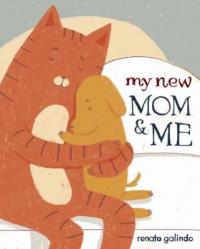 Renata Galindo has created a poignant and engaging story in My New Mom and Me. Galindo explores the story of a young dog adopted by a big orange cat, and their journey to be a family. The story of an older child being adopted allows the author to explore the character’s feelings and vulnerabilities in a relatable way, and could be a helpful resource for students experiencing a similar change in living situation. The challenges of making and becoming a family are represented with sensitivity. New families do not always fit together immediately and the adjustment period can be difficult and rewarding for both parent and child. The warm and inviting colours of the illustrations put the reader at ease, and are whimsically soft. This book is suitable for young readers, and could be a good tool for starting discussions about the many types of families that exist. There are a number of other resources in the OISE Library Juvenile Fiction collection on this subject. This is an example of the many Juvenile Fiction books that the OISE Library has received lately that deal with difficult subjects in a way that will help young readers to understand them.
Renata Galindo has created a poignant and engaging story in My New Mom and Me. Galindo explores the story of a young dog adopted by a big orange cat, and their journey to be a family. The story of an older child being adopted allows the author to explore the character’s feelings and vulnerabilities in a relatable way, and could be a helpful resource for students experiencing a similar change in living situation. The challenges of making and becoming a family are represented with sensitivity. New families do not always fit together immediately and the adjustment period can be difficult and rewarding for both parent and child. The warm and inviting colours of the illustrations put the reader at ease, and are whimsically soft. This book is suitable for young readers, and could be a good tool for starting discussions about the many types of families that exist. There are a number of other resources in the OISE Library Juvenile Fiction collection on this subject. This is an example of the many Juvenile Fiction books that the OISE Library has received lately that deal with difficult subjects in a way that will help young readers to understand them.
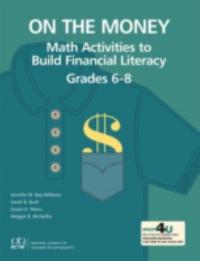 On the Money: Math Activities to Build Financial Literacy, Grades 6-8. This timely textbook was created to address an increasingly important issue both in the United States and around the world: the lack of financial literacy among youth. It proposes to integrate financial literacy lessons into the teaching of math, to the benefit of both subjects. The forward and introduction provide excellent context for this need using statistics and practical arguments. The activities and lesson plans within the book are designed to engage middle-school aged children with financial subjects in a way that makes the connections to their own lives and futures clear. The authors hope that with these skills students will be able to make informed and responsible financial decisions. Subjects covered in the book include credit card use, planning for student debt, how net pay works, calculating discounts, and statistics. The authors have attempted to make the book as practical as possible. While it was created for an American audience, many of the lessons are still applicable to the Canadian context. There is also an activity book for this textbook, which has been shelved with it in the new books section.
On the Money: Math Activities to Build Financial Literacy, Grades 6-8. This timely textbook was created to address an increasingly important issue both in the United States and around the world: the lack of financial literacy among youth. It proposes to integrate financial literacy lessons into the teaching of math, to the benefit of both subjects. The forward and introduction provide excellent context for this need using statistics and practical arguments. The activities and lesson plans within the book are designed to engage middle-school aged children with financial subjects in a way that makes the connections to their own lives and futures clear. The authors hope that with these skills students will be able to make informed and responsible financial decisions. Subjects covered in the book include credit card use, planning for student debt, how net pay works, calculating discounts, and statistics. The authors have attempted to make the book as practical as possible. While it was created for an American audience, many of the lessons are still applicable to the Canadian context. There is also an activity book for this textbook, which has been shelved with it in the new books section.
Child Soldier: When Boys and Girls are Used in War is by Jessica Dee Humphreys and Michel Chikwanine, with illustrations by Claudia Dávila. Michel Chikwanine’s story is told in this informative and gripping book. Abducted and forced to become a child soldier at the age of five, Michel was able to find his way back to his family through many hardships and horrors. He tells the story of the political and social instability that lead to his kidnapping, and highlights how many other children were and are taken today. This book combines facts, history and a powerful story to explore child soldiery, refugee ca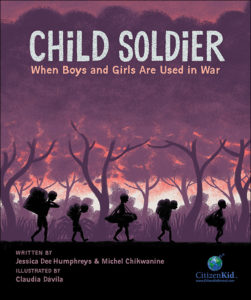 mps and the immigration experiences of former child soldiers. It is beautifully illustrated and does not hold back on representing difficult or disturbing subjects. This book is part of the Citizen Kid series, which was created by Kids Can Press to inform children about what is going on in the world and to inspire them to action as global citizens. It is one of fourteen books in the series. There are helpful resources included at the back of the book to encourage children to seek further information and to get involved in the movement to end the use of child soldiers. Michel Chikwanine now travels the world as an advocate of peace, using his experiences to advocate for those who have been denied a voice.
mps and the immigration experiences of former child soldiers. It is beautifully illustrated and does not hold back on representing difficult or disturbing subjects. This book is part of the Citizen Kid series, which was created by Kids Can Press to inform children about what is going on in the world and to inspire them to action as global citizens. It is one of fourteen books in the series. There are helpful resources included at the back of the book to encourage children to seek further information and to get involved in the movement to end the use of child soldiers. Michel Chikwanine now travels the world as an advocate of peace, using his experiences to advocate for those who have been denied a voice.
These books are on display on the “New Arrivals” shelf on the ground floor of the library, across from the reference desk and next to our new furniture. All of our new arrivals have been arranged by call number for easier and faster access.
Happy reading!
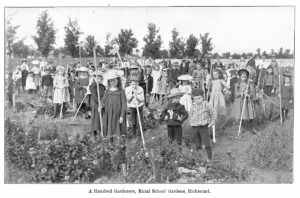
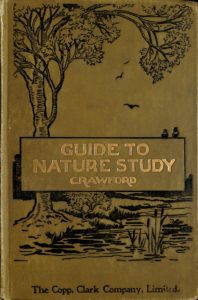 Education about the environment was a core part of student life in early Ontario schools. Nature study was a mandatory course of study. This course was taught in Forms I-IV (equivalent to today’s grades 1-8) and by 1915 was also taught in Kindergarten. Curricula about nature study provided suggestions for teachers, which could be adapted to the school’s local environment. Nature study was intended to foster an interest in the natural world and children were expected to interact directly with nature. According to the 1909 curriculum, teachers were not supposed to dictate notes to their students or assign textbooks. Instead, books about nature study were designed for teachers’ use, such as the Guide to Nature Study (1902) and the Ontario Teachers’ Manuals: Nature Study (1926).
Education about the environment was a core part of student life in early Ontario schools. Nature study was a mandatory course of study. This course was taught in Forms I-IV (equivalent to today’s grades 1-8) and by 1915 was also taught in Kindergarten. Curricula about nature study provided suggestions for teachers, which could be adapted to the school’s local environment. Nature study was intended to foster an interest in the natural world and children were expected to interact directly with nature. According to the 1909 curriculum, teachers were not supposed to dictate notes to their students or assign textbooks. Instead, books about nature study were designed for teachers’ use, such as the Guide to Nature Study (1902) and the Ontario Teachers’ Manuals: Nature Study (1926).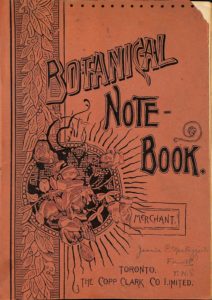 When students in early Ontario schools reached high school (“Form V”), science classes taught botany and zoology. Unlike nature study, textbooks were assigned to these classes and included texts such as the Ontario High School Beginners’ Botany (1925). Workbooks were also used in botany classes: a 1891 copy of the Botanical Note-Book is included in this month’s display, open to show student work.
When students in early Ontario schools reached high school (“Form V”), science classes taught botany and zoology. Unlike nature study, textbooks were assigned to these classes and included texts such as the Ontario High School Beginners’ Botany (1925). Workbooks were also used in botany classes: a 1891 copy of the Botanical Note-Book is included in this month’s display, open to show student work.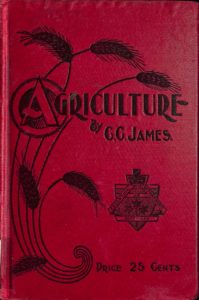 As with nature study, agriculture courses were designed to promote a love for nature and country life in students. Even after the curriculum changed in 1937 and nature study became less central to a student’s study of science, agriculture remained part of the Ontario curriculum. In fact, agriculture and horticulture are offered by the Ontario curriculum today, as special courses of study for grade 11 and 12 students!
As with nature study, agriculture courses were designed to promote a love for nature and country life in students. Even after the curriculum changed in 1937 and nature study became less central to a student’s study of science, agriculture remained part of the Ontario curriculum. In fact, agriculture and horticulture are offered by the Ontario curriculum today, as special courses of study for grade 11 and 12 students!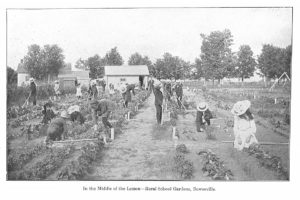 These books will be on display in the glass table on the ground floor of the OISE Library through the end of April.
These books will be on display in the glass table on the ground floor of the OISE Library through the end of April.
